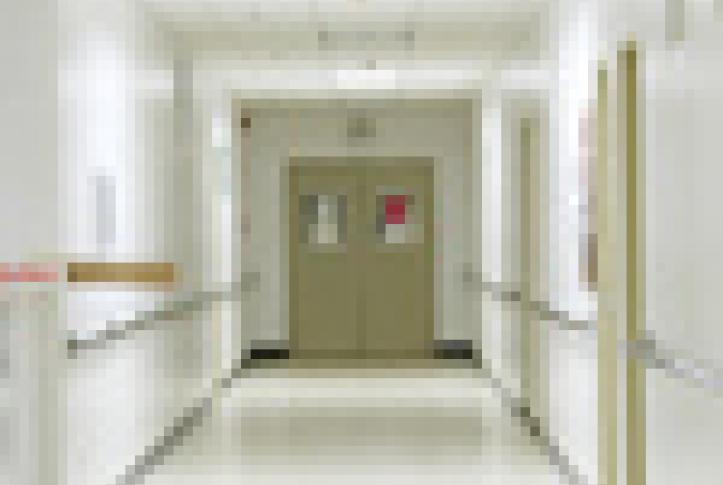To improve the quality of care that Medicare beneficiaries receive from hospitals, nursing homes, and other health care providers, the Centers for Medicare and Medicaid Services (CMS) contracts with Quality Improvement Organizations (QIOs) to lend technical assistance, disseminate quality improvement resources, and lead educational conferences and collaborative learning sessions for providers. While many studies have examined the effectiveness of this approach, none has asked whether the benefits are worth the federal government's financial investment.
A new study specifically looking at QIOs' work with nursing homes suggests that, based on measurable improvements in residents' quality of life, the QIO program is a sound investment of health care dollars.
In "Medicare's Quality Improvement Organization Program Value in Nursing Homes" (Health Care Financing Review, Spring 2007), Anthony Shih, M.D., M.P.H., assistant vice president for The Commonwealth Fund's Program on Health Care Quality Improvement and Efficiency, and colleagues used a "cost-utility" analysis to gauge the value of the QIO nursing home quality improvement interventions. The analysis relied on a unit of measurement commonly used to assess the benefit of medical interventions: the "quality-adjusted life year," or QALY. For each year a given patient is in perfect health, a value of 1.0 is assigned. If that patient's extra years would not be lived in full health (because of disability or chronic illness, for example), then the extra life-years are assigned a value of between 0 and 1. According to the researchers, the investment in nursing home quality improvement breaks down to $2,063 to $7,667 per QALY gained—an excellent return.
Do QIOs Improve Quality?
The study focused on QIOs' work with nursing homes, rather than hospitals or other health care settings, because the QIO program—which operates in all 50 states and the District of Columbia—was one of the only national nursing home quality improvement efforts during the study period (2002–2005). Thus, it is reasonable, the researchers say, to attribute nursing home quality improvements mainly to the work of QIOs. The researchers estimated QIOs' contribution to be 75 percent of observed improvements, and performed the analysis using a range of 50%–100% contribution.
CMS tasked QIOs with realizing improvements in the quality of resident care as determined by publicly reported measures. The study focused on five common quality-of-care measures for nursing home care: 1) percent of short-stay residents experiencing daily moderate or severe pain, or excruciating pain at any time during the study period; 2) percent of long-stay residents experiencing daily moderate or severe pain, or excruciating pain at any time during the study period; 3) percent of residents with worsening ability to perform daily activities; 4) percent of residents on whom physical restraints were used; and 5) percent of residents with pressure sores.
The researchers found absolute improvements of 2 to 4 percentage points for three of the five measures (percent of short-stay residents with pain, percent of long-stay residents with pain, and percent of residents who were physically restrained). These changes translate to relative improvements of 13 percent to 37 percent. For the other two measures, there were small decreases in quality, representing a relative change of 0.3 percent and 2 percent.
Do QIOs Provide Value?
The researchers estimated the cost of the investment in the QIO program from 2002 to 2005 ($100,895,928) using a cumulative expenditures report. They then calculated the cost per QALY by dividing this figure by the estimated total gain in QALYs that could be attributable to QIO involvement (50%–100%). This analysis found that CMS paid between $2,063 to $7,667 for each QALY gained. Across all three measures and using the mean QALY estimate, the cost per QALY was $3,577.
The authors emphasize that, while there is no consensus as to what constitutes an appropriate value for a QALY, a range of $50,000 to $100,000 per QALY is common, though some have proposed it might be worth $200,000 or more. The QALY measure, while inexact, enables researchers to take into account factors likely to be important to nursing home residents and their families and caretakers, such as levels of pain, discomfort, and independent functioning. It also facilitates comparisons of the value of QIO program with other medical interventions.
"Investment in QIO nursing home QI activities appears to be a good value for health care dollars," the authors conclude. "Even if the estimated cost per QALY gained was actually one order of magnitude larger (i.e., 10 times the reported cost) due to overestimates of QALYs gained due to QIO activities, it would still be well within the range of what is considered a good value for health care dollars in the U.S."
The authors cite several limitations of their study, including their reliance on assumptions to gauge the proportion of improvement attributable to QIO involvement. Further research is needed, they say, to assess the value of the QIO program as well as other quality improvement interventions.
Facts and Figures
- The Centers for Medicare and Medicaid Services pays an estimated $2,063 to $7,667 per quality-adjusted life year for improvements gained through the Quality Improvement Organization (QIO) nursing home program.
- After two years of QIO involvement in nursing home quality improvement, 20,288 short-stay residents avoided daily moderate pain or an incidence of excruciating pain, and 46,966 long-stay residents avoided such pain.
- Physical restraints were used on nearly 10% of nursing home residents in 2002, before QIO involvement. After two years of QIO work, restraint use was down to 7.5% of residents.



